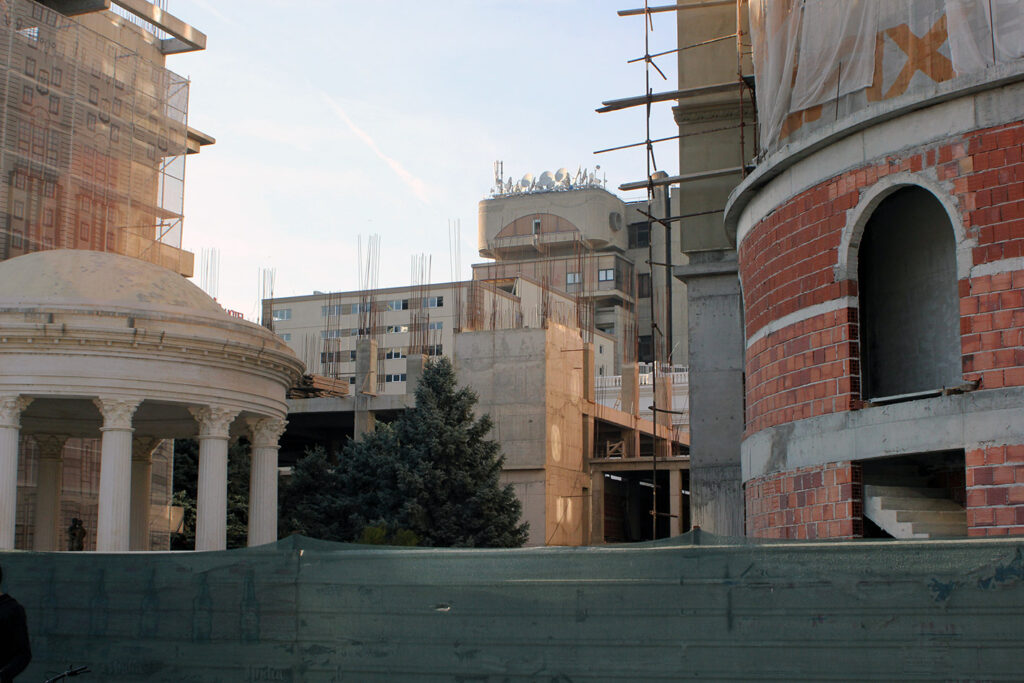
The Telecommunications Center being concealed from the main city square, 2015
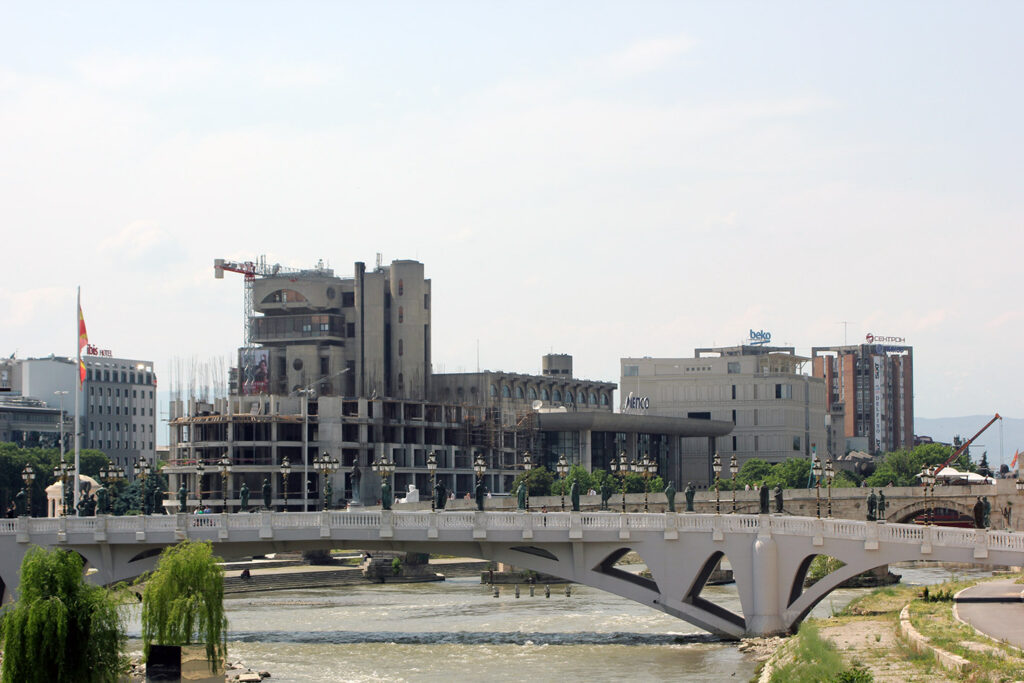
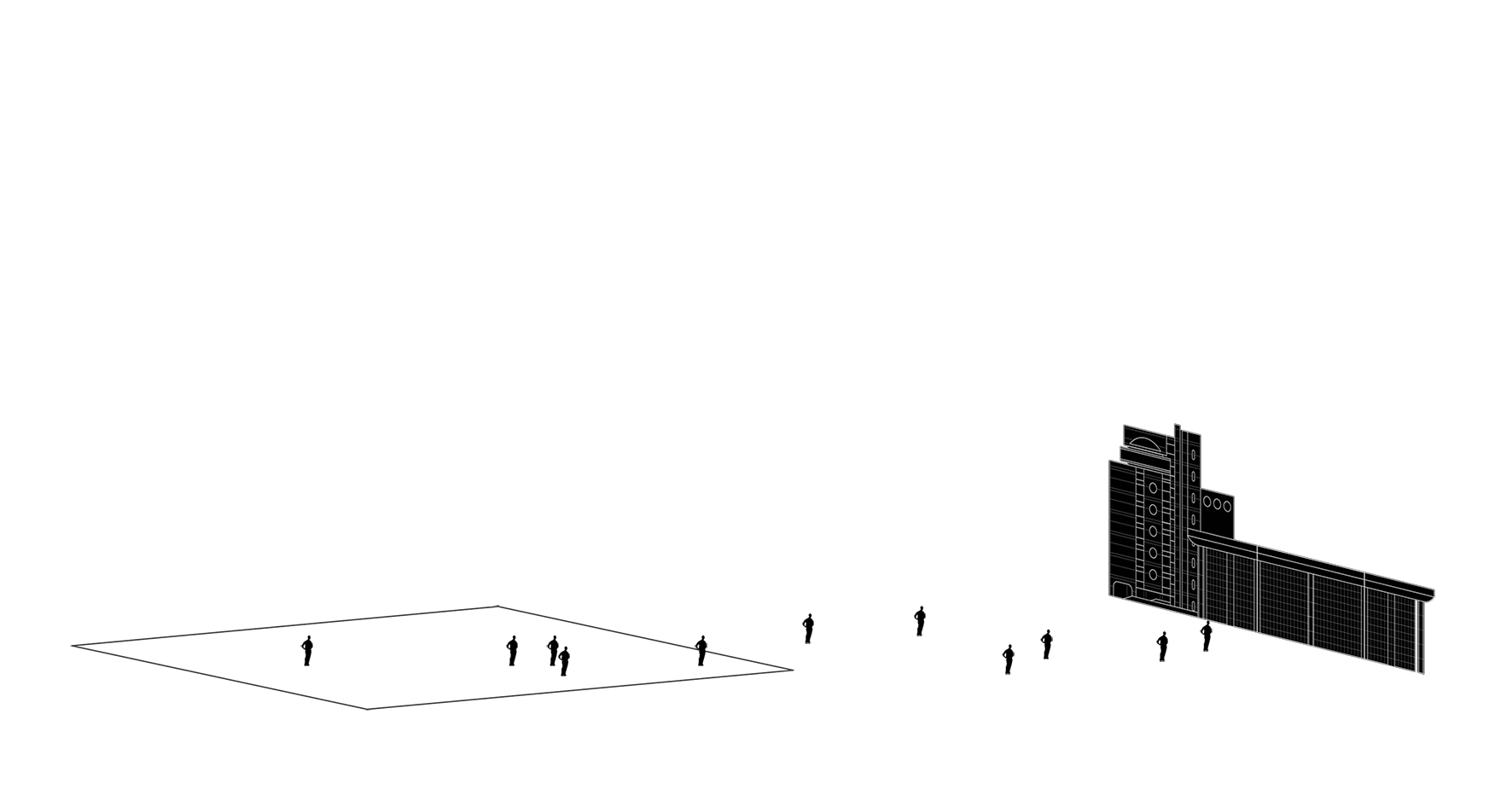
One other tactic for (de)constructing architectural memory is disconnect, usually combined with the tactic hide. This is the method of disconnecting architecture, which one wishes to be unnoticed and neglected, from an important public area in the city center. By disconnecting unwanted architecture from the everyday perception of the people, its roots and the memories behind it will be forgotten, which is the main strategic goal of the entire Skopje2014 project when it comes to the architecture produced in Yugoslavian times.
This is a tactic that doesn’t directly modify the existing architecture, but the deconstruction of memories is actually done by taking the attention away from them. Disconnecting is done by placing new architecture between the unwanted one and the public space.
The first case of disconnection is between the Macedonian Opera and Ballet from 1979 and the bank of the river Vardar – a significant public area for the city center. A part of the opera and ballet building was its entering platform, which gradually lowered its level towards the river. In the period 2011-2014 five new buildings appeared along the river bank. The opera and ballet building was disconnected from the river bank, as well as erased from sight. The platform in front of the opera and ballet building doesn’t exist anymore. By erasing the public area in front of it, the building itself is being erased from the public perception and in time will be neglected and forgotten.
The disconnection of the Telecommunications Center from 1974 and the Electricity Transmission System Operator of Macedonia (MEPSO) from 1989 from the main city square is another example of erasing architectural memory from the public perception. As of 2011 here is an ongoing construction of a new architectural layer of 3 buildings on the public green area between the MEPSO building and the main square. This new layer is going to be big enough to also erase the existing buildings from sight when walking on the main city square.
This tactic argues that in order to reinvent the course history, one needs to feed the public new images.
And if these images are placed where the everyday paths of the biggest portion of citizens cross, it would be one step forward to completing the general goal of changing history.
In time the old images are blurred from one’s memories and are replaced with newer models.
If one changes the visuals a person meets every day, will that in time, also change that person’s general perception beyond the visual?
Will the past be forgotten in time, if it has been visually erased?
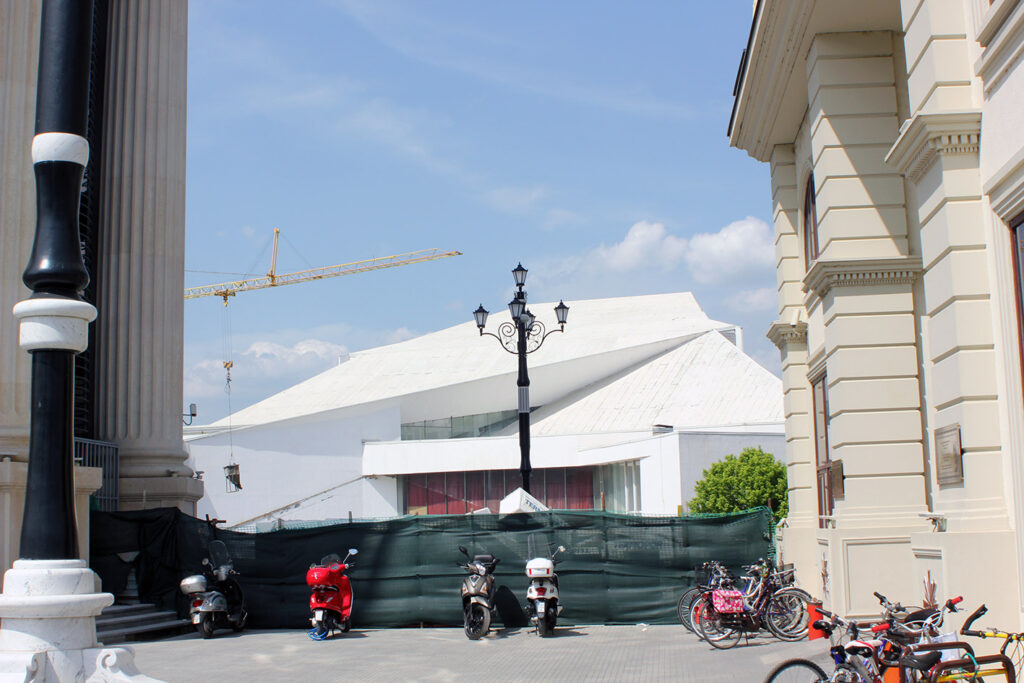
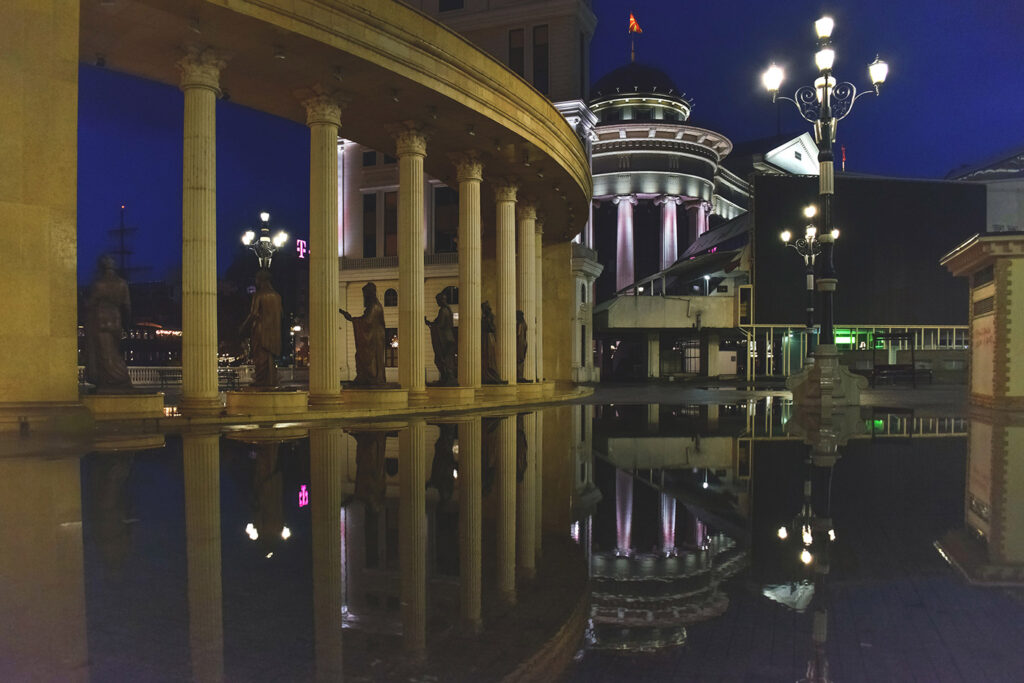
Photo by Dimitris Vetsikas
